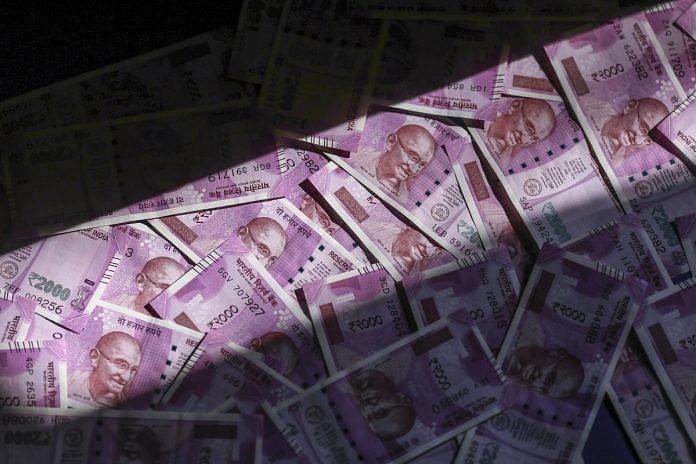New Delhi: The number of Rs 2,000 currency notes in circulation has decreased to 223.3 crore pieces or 1.75 per cent of total notes in circulation (NIC) in November this year, compared to 336.3 crore pieces in March 2018.
Printing of banknotes of particular denomination is decided by the government in consultation with the Reserve Bank to maintain desired denomination mix for facilitating transactional demand of public, said Pankaj Chaudhary, Minister of State in Finance Ministry, in a written reply in the Rajya Sabha.
“As against 3,363 million pieces (mpcs) of Rs 2,000 denomination banknotes in circulation on March 31, 2018 constituting 3.27 per cent and 37.26 per cent of NIC in terms of volume and value respectively; 2,233 mpcs were in circulation on November 26, 2021, constituting 1.75 per cent and 15.11 per cent of NIC in terms of volume and value, respectively,” he said.
Chaudhary further said that no fresh indent has been placed with currency printing presses for the banknote from 2018-19 onwards.
“The decrease in circulation of Rs 2,000 note issued after demonetisation is because no fresh indent has been placed for printing of these notes from 2018-19 onwards.
Furhter, notes also go out of circulation as they get soiled/mutilated,” he said.
On November 8, 2016, the government had decided to demonetise the then prevailing Rs 500 and Rs 1,000 banknotes to curb black money, among other objectives.
Following demonetisation, Rs 2,000 note and a new series of Rs 500 note were introduced. Later, banknote of denomination of Rs 200 too was introduced.
In another reply, the minister said demand for currency depends upon several macro-economic factors, including economic growth and level of interest rae.
Precautionary demand generated by the public during fiscal 2020-21 due to Covid-19 pandemic induced uncertainties is also an important factor in currency demand.
“Combination of greater public demand for cash and a contraction in GDP has led to an increase in Currency in Circulation (CiC) as percentage of GDP from 12 per cent during 2019-20 to 14.5 per cent during 2020-21,” Chaudhary said.
However, year-on-year growth in CiC has decelerated sharply to 7.9 per cent as in November 2021 from pandemic influenced surge to 22.2 per cent a year ago, he added.
Also read: 61 companies raised Rs 52,759 crore via IPOs till October this fiscal, says FM Sitharaman



